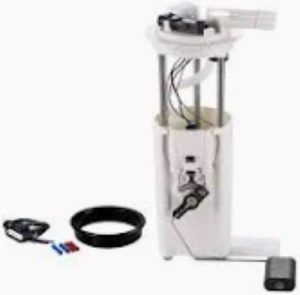Performance fuel pumps are adjusted according to the expectations of a high performance engine, which in turn requires the needed fuel to be delivered according to accurate high pressure and high flow rates. Most performance tuning will set up the fuel pump to push out well in excess of 300 liters per hour (LPH) — much higher than the 150-200 LPH a more standard pump can deliver. The high flow rate ensures sufficient fuel delivery at high RPMs where maximum fuel demand is especially critical in turbocharged or supercharged configurations where the intake is under load.
Pressure setting is one of the most important parameters in tuning. Working fuel pressures may be over 100 PSI with a high-performance engine, so the fuel pump needs to be tuned to deliver that amount of pressure without falling off. Performance pumps like the Walbro and Bosch will have much more capacity than what the engine requires and they will build that pressure even under load, which prevents the engine from going lean, knocking, and losing power. Performance-tuned pumps maintain a consistent stable high-pressure ideal for your application, which can increase the output of an engine up to 15% by providing an optimal air-fuel ratio.
The other aspect that is also important in tuning is voltage stability. High-pressure high-flow pumps, such as those used in performance applications, generally need a steady 12–14 volts to be fully operational. A mere 5% drop in voltage will decrease pump efficiency by almost 20%, which translates to power loss for the engine. A commonly used upgrade for tuners when dealing with a vehicle in a high-performance scenario is wiring or voltage stabilizers to ensure that power is continually supplied without disruptions, since a small drop in voltage can interrupt the flow of fuel on a tuned setup.

Performance-tuned fuel pumps have more internal frictions (and require higher pressures to inject), making thermal regulation more difficult. Since more flow, equals more heat, the performance pumps are built with special materials such as reinforced rubber seals and aerospace grade metal alloys designed to be stronger at higher temps and not wear out. While typical pumps cant operate at high temperatures past 100 degrees Fahrenheit, Bosch's high-performance models include integrated temperature management systems that enable the unit to run safely under prolonged high-load conditions.
Part of tuning to make it fast is a fuel pressure regulator. It assists in smoothing the passage of fuel by regulating the fuel pressure to ensure the right amount is sent from the fuel pump according to the input of the throttle. In drag racing, where maximum fuel delivery is critical, pressure regulators are often set to bleed off any pressure above what the engine may need, avoiding power variances. Make the cut with precision, andengineering in just the right amount of fuel pressure can stress about a 10% improvement in performance consistency when pushing when things get intense on track.
A performance Fuel Pump needed for one particular Engine will not necessarily work for another, this highlights the importance of selecting the right, well-tuned Fuel Pump to utilize the fuel system at high loads per inherent requirement for a reliable and proper application. Good tuning raises the power output without compromises in either direction and lowers wear for an efficient performance under various load conditions.